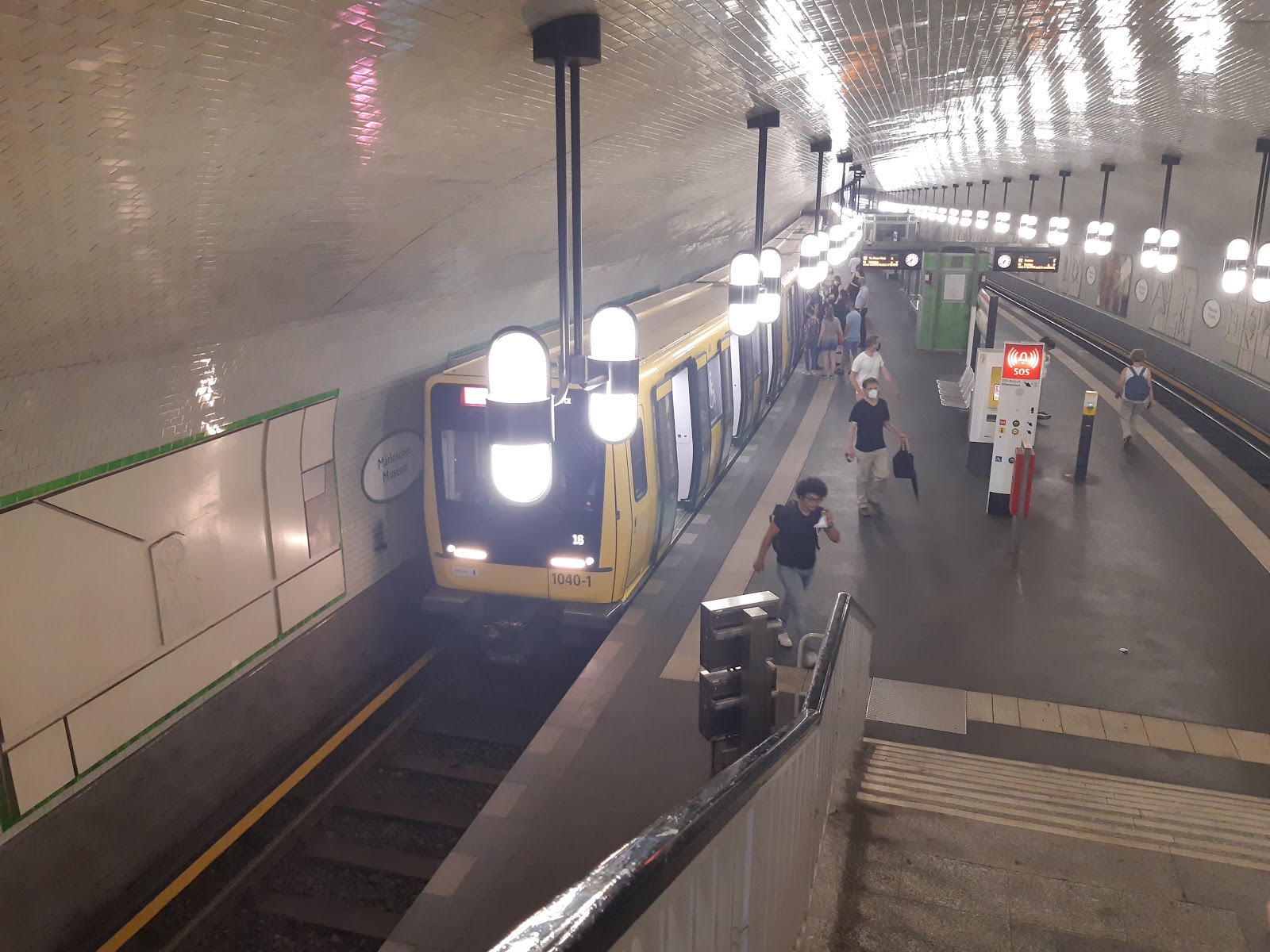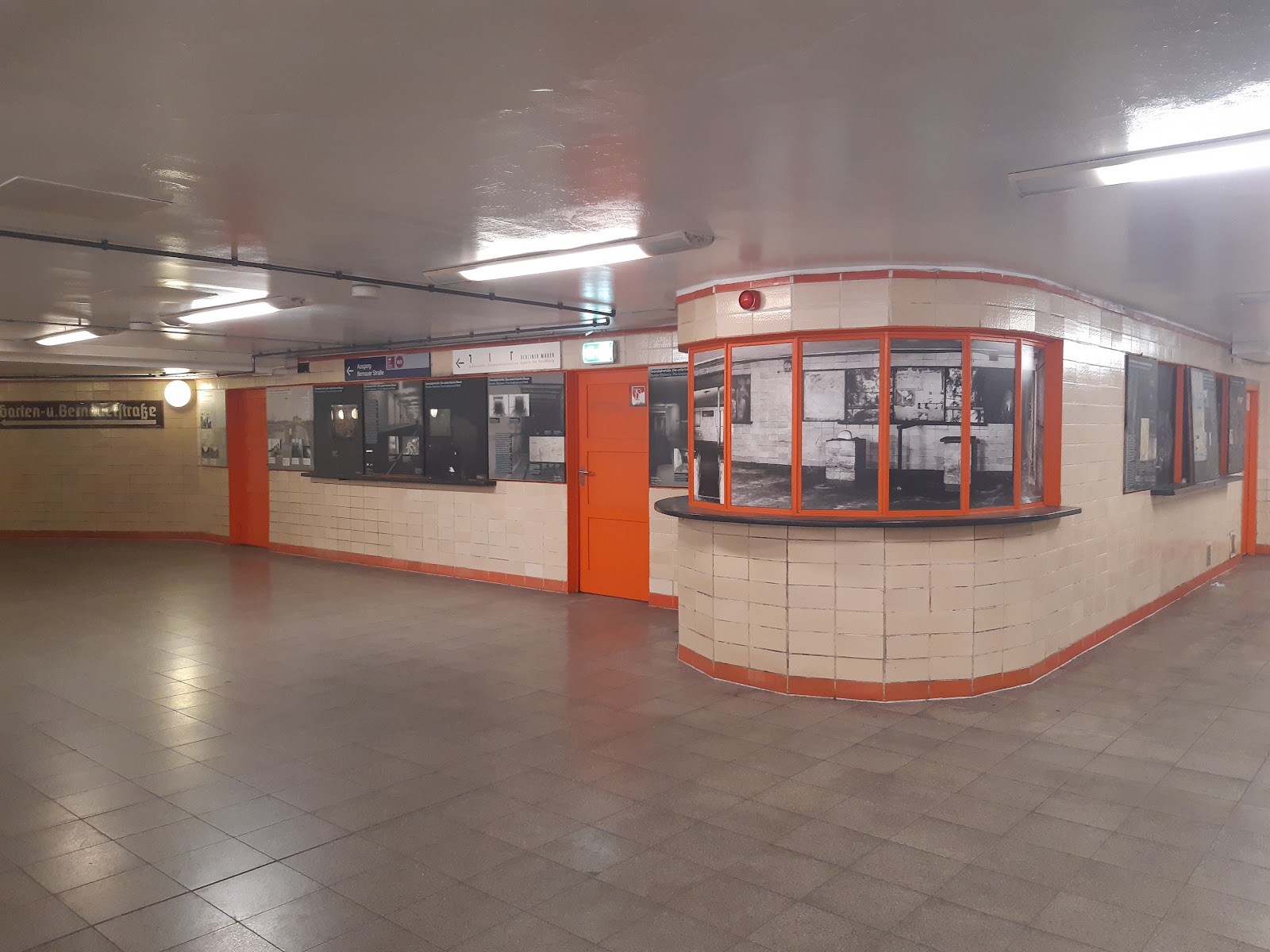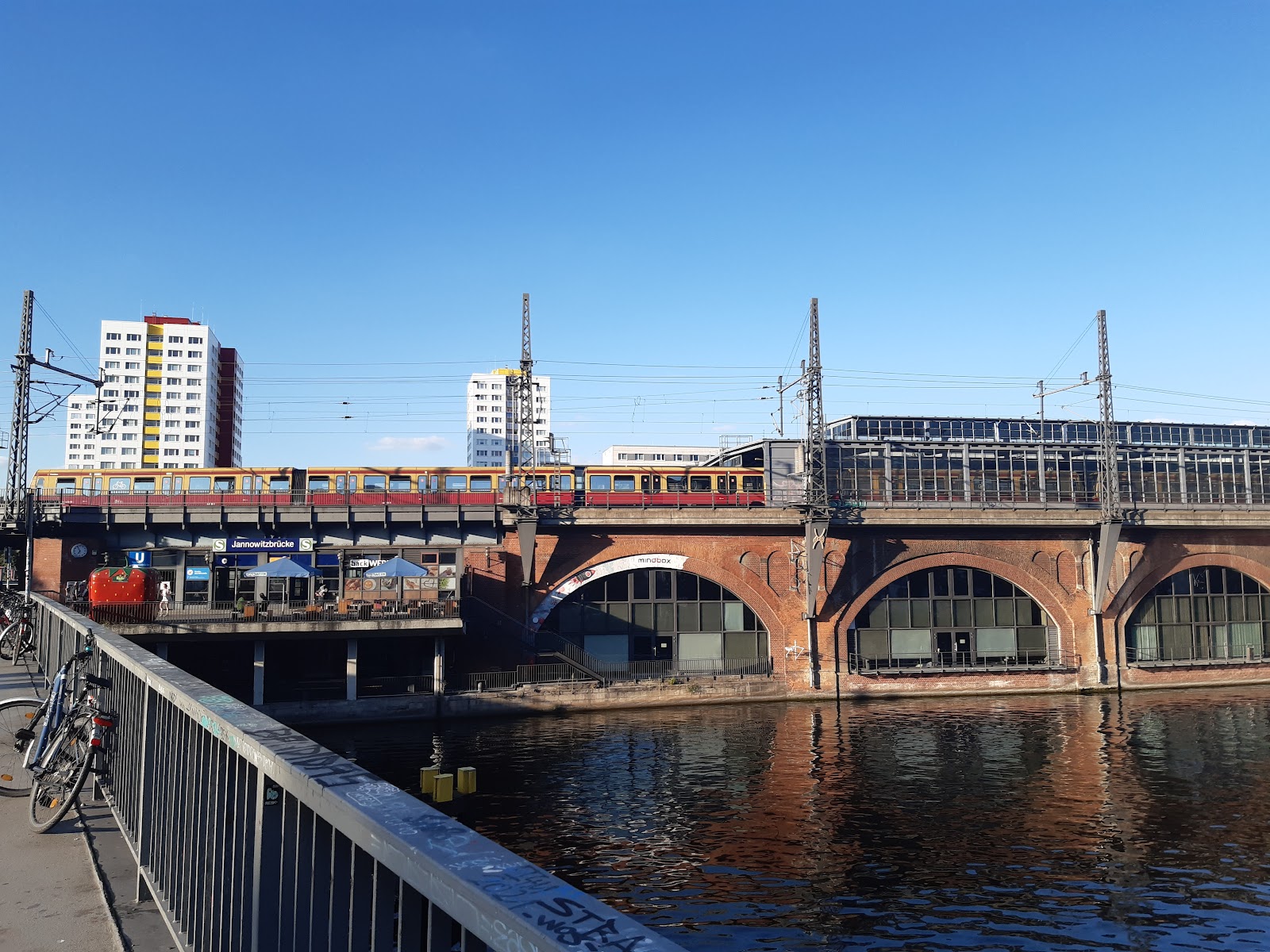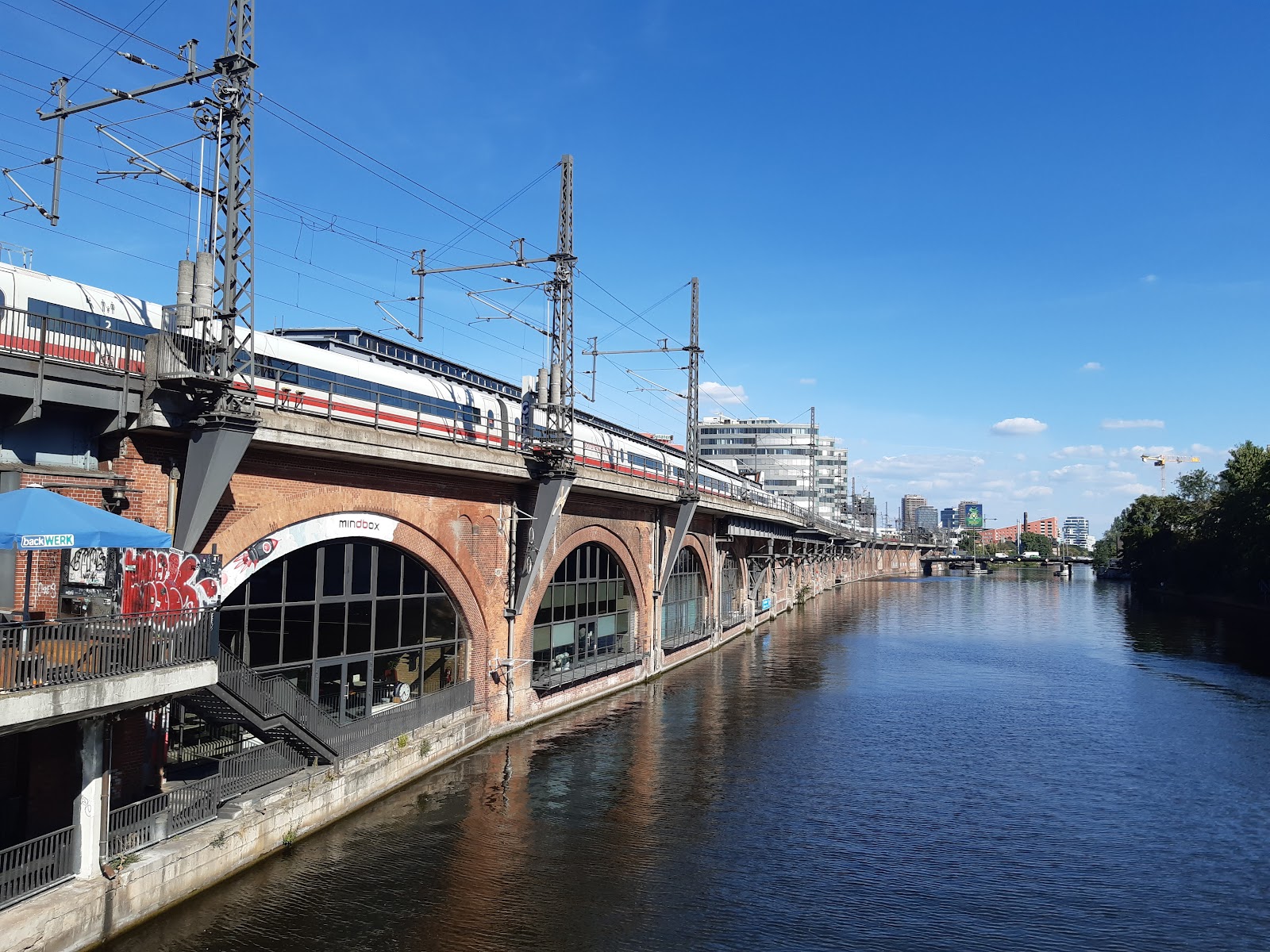Berlin Transit
Berlin has several transit systems: the underground, or U-Bahn; the suburban railway, or S-Bahn; the trams; and the buses.
We purchased a three day ticket at a U-Bahn station. It had to be validated before we first used it, but there after we could just use any train, tram or bus. No one looked at our tickets. Medical masks were compulsory on public transport, though not the stations, when I was there (August '22), and over 90% of people were complying.
U-Bahn
The U-Bahn was opened in 1902, and is the biggest in Germany. It is standard gauge, with power pickup from a third rail. Unlike the London Underground, the power rail is covered, with units collecting power from underneath the rail. There are ten lines, denoted U1 to U10.
Many of the stations are simple island platforms, with steps straight down on to the platform, from the middle of the road.
This is a larger, and more modern, station, Bundestag.
I did not great images of the trains, but you can see two distinct styles; the train in the upper image is noticeably lower.
The interior of one of the smaller trains.
When the Berlin wall was built in 1961, some lines were split between East and West. Two lines, U6 and U8, started and ended in the West section, but passed through the East, which bulges out to include the centre of the city. The East Germany authorities allowed trains to pass through the stations, but not to stop, and these so-called ghost stations were more and more convincingly blocked to prevent escape to the west.
One of these stations, Nordbahnhof, has displays recalling the situation.
S-Bahn
The S-Bahn (Stadt Bahn) is for longer distances, though it too runs underground in places. It runs at elevation in places too, affording good views in places.
This is Alexanderplatz Bahnhof, one of the bigger stations, with a train visible through the windows - and a tram at street level.
This is Jannowitzbrücke; the train looks much like a U-Bahn train. The nearer lines are for mainline trains.And Hackescher Markt, interior and exterior.
Trams
The tram system dates from 1865, with electric trams from 1881, though it took until 1902 for it to be running properly with overhead lines. There are 22 lines, running on standard gauge, denoted by a number or, for those running 24 hours a day, a letter M and a number.
One positive thing to say about the East Germans is that they did not rip up the trams. The West Germans, as in so many other cities, got rid of their trams, the last going in 1967. Consequently most of the tram system lies in what was East Berlin (the exceptions being modern additions).
A tram crossing Ebertsbrücke.
Tram lines under repair near Hackescher Markt.
I am sorry to say that I never managed to travel on a tram.
Buses
Buses are buses... I did use the buses




















Comments
Post a Comment